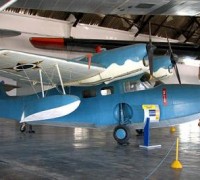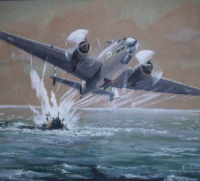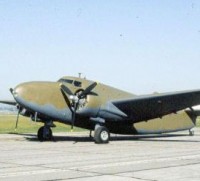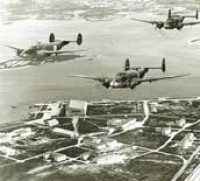BRAZILIAN AIR FORCE FAB * - BRAZILIAN AIR FORCE
16)LOCKHEED 12 ELECTRA
Total received: 08
General characteristics
Crew: 2, pilot and co-pilot
Capacity: six passengers
Length: 36 ft 4 in (11.07 m)
Wingspan: 49 ft 6 in (15.09 m)
Height: 9 ft 9 in (2.97 m)
Wing area: 352 ft² (32.7 m²)
Empty weight: 5,765 lb (2,615 kg)
Loaded weight: 8,650 lb (3,924 kg)
Powerplant: 2× Pratt & Whitney R-985-48 radial engines, 450 hp (336 kW) each
Performance:
Maximum speed: 195 knots (225 mph, 362 km/h)
Range: 695 NM (800 mi, 1,287 km)
Service ceiling 22,900 ft (6,980 m)
Rate of climb: 1,140 ft/min (427 m/min)
Brazilian Air Force also received sundry other aircraft many used for the transport. Several Commands of the Air Force and Brazilian Army employed them to visit Airbases and other military garrisons across the country. 8 Lockheed L-12 were brought during the war.
Consequently, in 1937, attention was paid to the purchase of an aircraft capable of carrying out the work of transporting authorities, either the Brazilian Army or the federal government. It is not known for sure how the Military Aviation Directorate proceeded with the evaluation and choice of the desired aircraft, but it is fair to assume that, among the candidate aircraft, there were those already in use by Brazilian air transport companies. And among them was probably the Lockheed Electra L-10, which in early 1937 had just entered Panair do Brasil without service. However, the choice fell on the Lockheed 12A Electra Junior, a smaller version of the Electra. During the second half of 1937, an order contract was signed for two of these aircraft, which were considered ready in September of the same year.
One of the pilots of these aircraft was the then Capt. Nero Moura, who would command the 1st Fighter Aviation Group in Italy. Indeed, these were the first planes used in Brazil with the specific mission of transporting authorities and, in the exercise of this role, they regularly flew between the city of Rio de Janeiro, and the main capitals of the South and Southeast, as well as smaller locations in other regions. After years of excellent service, it became clear that having just two planes was insufficient to handle all of the authority's transport missions. As a result, at the end of 1939, two more Lockheed 12A Electra Juniors were ordered from the manufacturer, both received in the United States in February of the following year. Finally, on the eve of the creation of the Ministry of Aeronautics (MAer), in January 1941, a third order contract was signed, this time for four more aircraft, which were transferred in flight to Brazil in April 1941.
This measure was intended not only to support the expansion of the Military Air Mail in those regions, but to maintain at least a presence that would inhibit the activities of the navies of warring countries along the Brazilian coast. However, at the beginning of 1942, it was already clear that the Brazilian coast would increasingly become the scene of war actions. As a result, the Brazilian Air Force tried to expand its presence in that critical area, so the coast was manned as never before. In the face of this effort, there was a need to maintain a quick connection between the federal capital and the headquarters of the main air areas. Due to the receipt of more Lockheed Lodestar aircraft in the course of 1942, it was decided that some of the Lockheed 12A Electra Junior would be moved on a semi-permanent basis to locations such as Florianópolis, Natal and Recife.
However, in light of the availability of the many Lockheed Lodestar C-60s received during the war, as well as the single Lockheed Lodestar 18-10-01 VC-66, the so-called “Lockheedinhos” stopped flying presidential missions. Reduced to seven aircraft as a result of an accident with one of the Electra Juniors in 1944, these planes lost the registrations they had in the following year, gaining new registrations within the system that the Material Directorate (DIRMA) had developed, as well as the designation of UC-40. Under the Command Aircraft Section, some of the Lockheed 12A Electra Juniors became available to major commands. This picture remained essentially unchanged, even when the Command Aircraft Section was transformed into the Special Transport Squadron (ETE) in May 1954.
The incorporation of a large number of Douglas C-47 transport aircraft during the 1950s would effectively end the career of the Lockheed 12A Electra Junior as an authority transport aircraft in the Brazilian Air Force; these planes began to perform more utilitarian activities for the benefit of several units. At that time the fleet was already reduced to four aircraft, when in the year 1960, that number decreased to three. In view of the small number of cells, as well as the natural difficulties in acquiring spare parts for an aircraft that had ceased to be produced almost 20 years before, the Material Directorate (DIRMA) determined the deactivation and disposal of the C-40 still existing in the Brazilian Air Force. This took place in the first quarter of 1963. The three aircraft were then sold in public tender, two of which were flying with civil operators by the end of the 1960s.
By Armas Nacionais - Modelismo & História: Lockheed 12A UC-40 Electra Junior
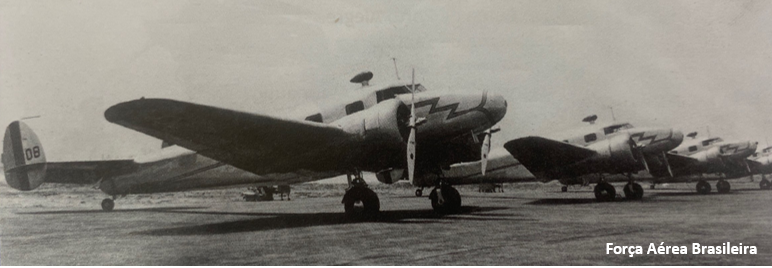
Above several Lockheed 12 parked at Campo dos Afonsos Airfield Rio de Janeiro. Picture by Armas Nacionais - Modelismo & História: Lockheed 12A UC-40 Electra Junior
